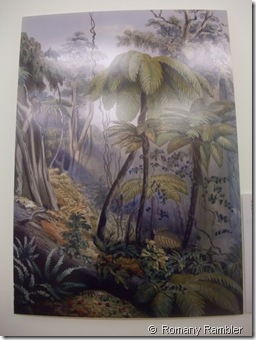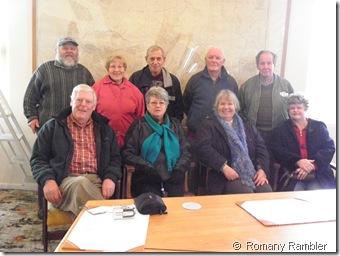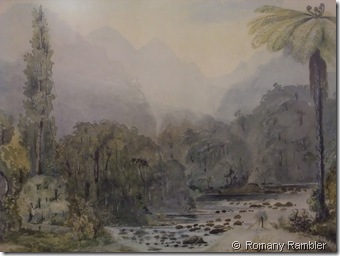We rather take roads and motorways for granted these days, don’t we? It wasn’t always so easy to travel around this hilly bush covered country of ours. The early settlers certainly had it tough out here in the colonies. This was brought home to us when we visited the Otaki Museum on Sunday and saw the current exhibition called “The Road North”. This describes the building of the road over the Paekakariki Hill from 1846 to 1849. It was constructed under the command of Lt Elliott and the men of the 58th and 99th British Regiments, together with Maori workmen.
 Native bush covering the hills
Native bush covering the hills
Prints of original paintings and old photos showed the bush cover and how hard it must have been for the surveyors to put a road through in these early years.
The road began in Johnsonville, through to Porirua, then followed the path of the Kenepuru River to the Porirua and Paremata Harbours. It then travelled east along Paremata Road (now State Highway 58) to Pauatahanui, then over the Paekakariki Hill ending at what is now State Highway One near Paekakariki. The Paekakariki Hill Road is still rather narrow and winding, and we would certainly not consider towing our caravan over this road.
It is hard for us to imagine just how long and uncomfortable this trip would be, swaying on top of the wagon as it jolted along. We read how the passengers had to get down and help push when the wagons became mired in the mud. The next section of the road, the Beach Road, was much easier, and ran along the beach from Paekakariki to Foxton. The horses and wagons moved along much quicker on the shoreline. It is certainly a different story these days as we hop in our cars and travel along State Highway One at 100kms an hour.
 Upstairs in the Council Chambers
Upstairs in the Council Chambers
The museum is housed in the historic 1918 Bank of New Zealand, which was restored from a derelict condition. The building has handsome white painted pressed metal ceilings, (the downstairs ceiling mimicked a plaster ceiling) and stained glass windows. After viewing the exhibition we walked up the elegant wooden staircase to the Council Chamber which displayed further memorabilia. We posed for our group photo around the Council table.


No comments:
Post a Comment